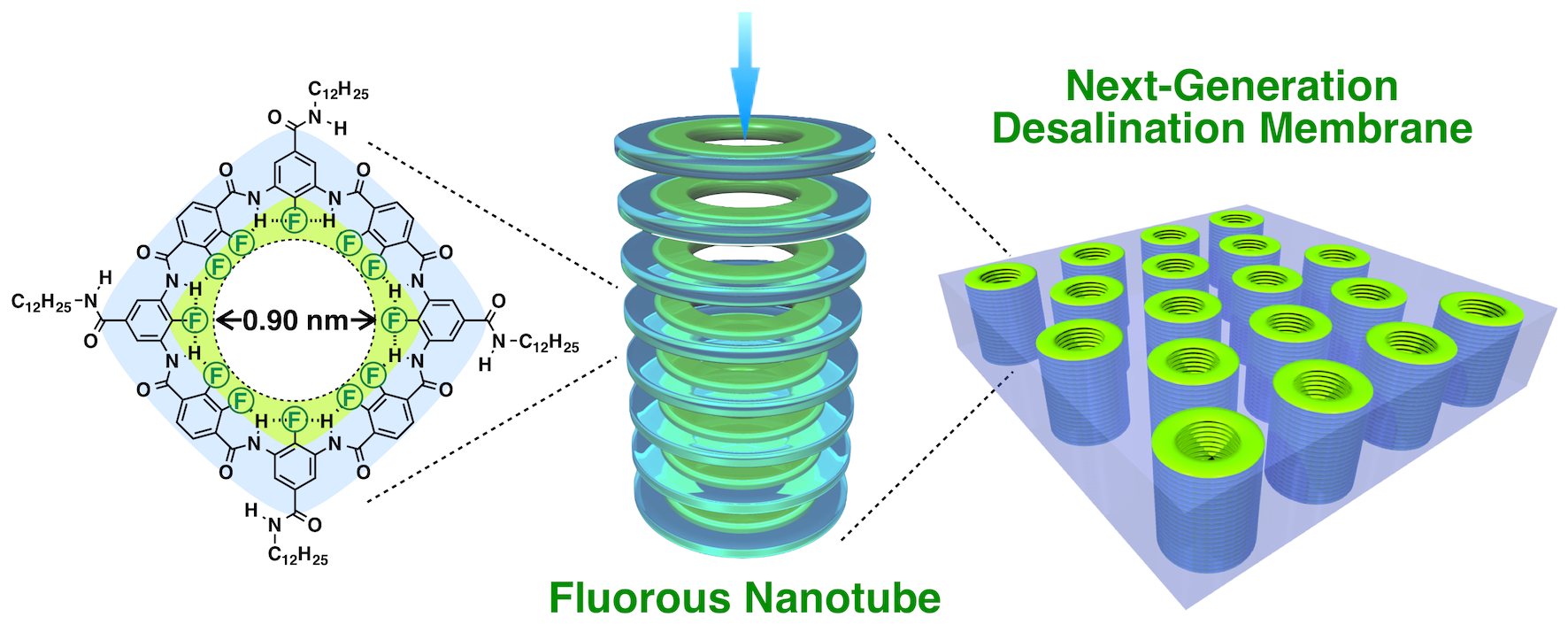Water scarcity is a significant global issue. Seawater desalination is a well-established method for producing drinkable water, but it has high energy costs.
 Fluorous nanotubes. Reducing the energy and thus financial cost, as well as improving the simplicity of water desalination, could help communities around the world with poor access to safe drinking water. Image Credit: © 2022 Itoh et al.
Fluorous nanotubes. Reducing the energy and thus financial cost, as well as improving the simplicity of water desalination, could help communities around the world with poor access to safe drinking water. Image Credit: © 2022 Itoh et al.
Researchers have successfully filtered salt from water using fluorine-based nanostructures for the first time. These fluorous nanochannels work more effectively, require less pressure and energy, and are a more efficient filter than current desalination methods.
In a nonstick Teflon-coated frying pan, the wet ingredients easily slide around it. This occurs because fluorine—a lightweight element that is normally water repellent or hydrophobic—is a key component of Teflon. Teflon could also be used to line pipes to enhance water flow.
This behavior caught the attention of Associate Professor Yoshimitsu Itoh from the Department of Chemistry and Biotechnology at the University of Tokyo and his team. It prompted them to investigate how fluorine pipes or channels might function on a much smaller scale, the nanoscale.
We were curious to see how effective a fluorous nanochannel might be at selectively filtering different compounds, in particular, water and salt. And, after running some complex computer simulations, we decided it was worth the time and effort to create a working sample.
Yoshimitsu Itoh, Associate Professor, Department of Chemistry and Biotechnology, University of Tokyo
Itoh adds, “There are two main ways to desalinate water currently: thermally, using heat to evaporate seawater so it condenses as pure water, or by reverse osmosis, which uses pressure to force water through a membrane that blocks salt. Both methods require a lot of energy, but our tests suggest fluorous nanochannels require little energy, and have other benefits too.”
The researchers developed test filtration membranes by chemically synthesizing nanoscopic fluorine rings, which were stacked and embedded in an otherwise impermeable lipid layer. This was similar to the organic molecules that constitute cell walls.
They made numerous test samples with diameter nanorings ranging from 1 to 2 nm. A human hair is approximately 100,000 nm wide. Itoh and his colleagues calculated the presence of chlorine ions, one of the two major components of salt (the other being sodium), on either side of the test membrane to see how effective their membranes were.
Itoh states, “It was very exciting to see the results firsthand. The smaller of our test channels perfectly rejected incoming salt molecules, and the larger channels too were still an improvement over other desalination techniques and even cutting-edge carbon nanotube filters.”
The real surprise to me was how fast the process occurred. Our sample worked around several thousand times faster than typical industrial devices, and around 2,400 times faster than experimental carbon nanotube-based desalination devices.
Yoshimitsu Itoh, Associate Professor, Department of Chemistry and Biotechnology, University of Tokyo
Fluorine repels negative ions like chlorine in salt because it is electrically negative. However, this negativity has the added benefit of breaking down water clusters, loosely connected groups of water molecules that pass through the channels more quickly. The fluorine-based water desalination membranes developed by the team were more efficient, used less energy, were quicker, and were very simple to use.
At present, the way we synthesize our materials is relatively energy-intensive itself; however, this is something we hope to improve upon in upcoming research. And, given the longevity of the membranes and their low operational costs, the overall energy costs will be much lower than with current methods.
Yoshimitsu Itoh, Associate Professor, Department of Chemistry and Biotechnology, University of Tokyo
Itoh concludes, “Other steps we wish to take are of course scaling this up. Our test samples were single nanochannels, but with the help of other specialists, we hope to create a membrane around 1 meter across in several years. In parallel with these manufacturing concerns, we’re also exploring whether similar membranes could be used to reduce carbon dioxide or other undesirable waste products released by industry.”
Journal Reference:
Itoh, Y., et al. (2022) Ultrafast water permeation through nanochannels with a densely fluorous interior surface. Science. doi.org/10.1126/science.abd0966.